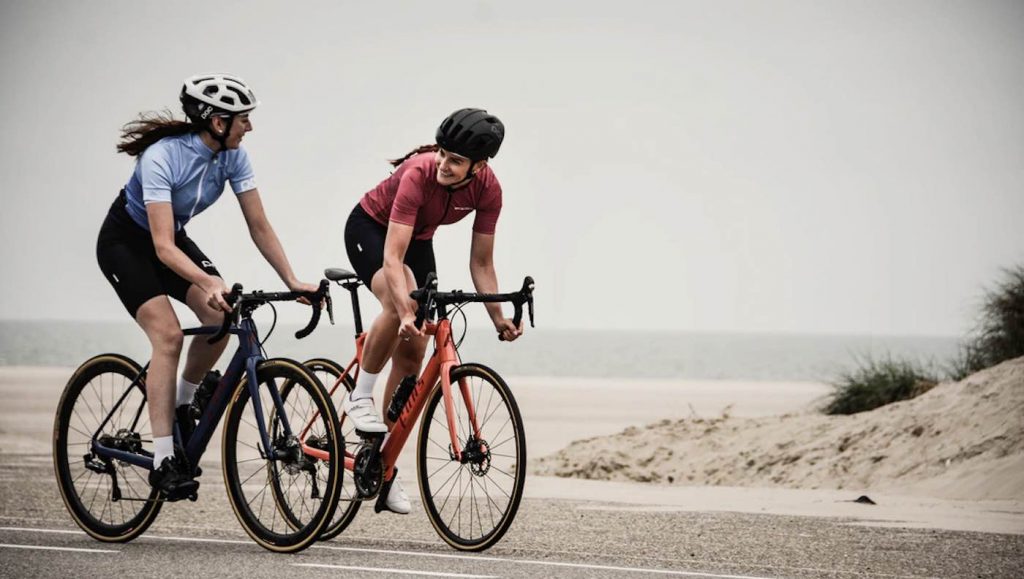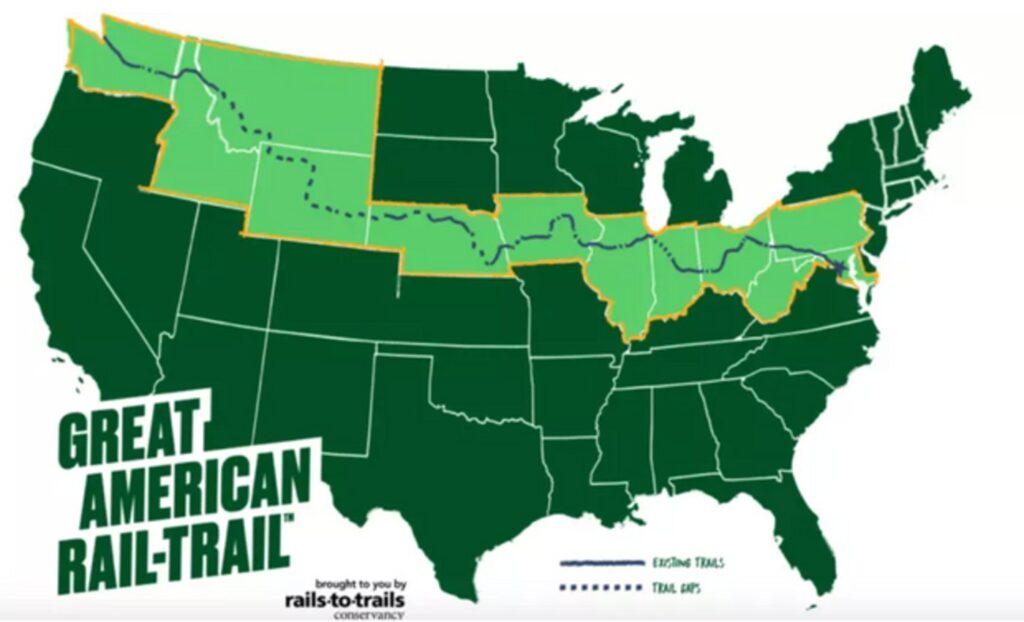Back in 2019, we shared word of an exciting new trail designed to allow cyclists and hikers to travel 3,700 miles across America from coast to coast.

The Great American Rail-Trail will eventually run from Washington, D.C. to Washington state’s coast and connect more than 145 existing paths. More than 1,988 miles have already been completed.
Once the trail project, which is led by Rail-to-Trails Conservancy (RTC), is completed, it will serve a huge number of Americans, as 50 million live within 80km of the trail.
For cycling fans, here’s a look at how rail-trails have benefitted people in the pandemic, and a peek at the increasing popularity of cycling and long-distance trails around the world.
COVID-19 Lockdown Proves Rail Trails Invaluable

Rail trails, paths built on disused railway tracks, and other recreational routes have proved invaluable respites for many during the COVID-19 pandemic, providing alternative commuting routes and space for people to exercise, often near built-up urban areas.
“This year has proven how vital projects like the Great American Rail-Trail are to the country. Millions of people have found their way outside on trails as a way to cope with the pandemic,” said Ryan Chao, president of RTC.
“As the Great American Rail-Trail connects more towns, cities, states, and regions, this infrastructure serves as the backbone of resilient communities, while uniting us around a bold, ambitious, and impactful vision.”
Cycling Increasingly Popular During Pandemic
While multi-use trails can be used by anyone from joggers to horse riders, cycling has become particularly popular during lockdown both as a form of exercise and a method of transport. Bike sales soared across the world as people sought to avoid public transport.
There are the obvious health benefits of traveling by bike. Not only does it provide an aerobic workout and trigger the body’s feel-good chemicals, endorphins, cycling is also easy on the joints, builds muscle, increases bone density and helps with everyday activities. Cycling is also seen as a way of handling post-pandemic pollution levels.
Paris is just one place planning to become a ’15-minute city’, where everything you need is within a 15-minute radius by foot or by bike.
MORE: This Clever Attachment Makes Any Bicycle an E-Bike in Just Seconds – And it’s a Much Cheaper Method
Milan is implementing a similar program, while Buenos Aires has introduced free bike rental schemes. Europe has spent 1 billion euros on cycling infrastructure since the pandemic began, according to the European Cyclists’ Federation.
Cycling Routes Across the World
At around 5,955km, the Great American Rail-Trail may be particularly ambitious in terms of scale, but it is one of many innovative cycling projects across the world. The 4,450km EuroVelo 6 route runs through 10 countries as it crosses Europe between the Atlantic and the Black Sea.
The 346km Transpennine Trail across the north of England, which opened in 2001, uses disused railway tracks left empty after the decline of the coal industry and passes through city centers, heritage sites and national parks on its way between coastlines.
RELATED: Insert This On Your Bike Wheel to Filter the Air Pollution While You Cycle
Last year, the UK launched the 1,300km Great North Trail running from the Peak District in the north of England to John O’Groats at Scotland’s north-eastern tip.
In the Belgian province of Limburg, the Cycling Through Water path enables cyclists to cut through the ponds of Bokrijk. The 200-meter path is at eye-level with the water, allowing riders to glide across the lake.
CHECK OUT: Exercise in the Morning May Stave Off Cancer, As Opposed to Later in the Day, New Study Says
Meanwhile, the 7.6km Xiamen bicycle skyway is the world’s longest elevated cycle path and runs above the Chinese city’s road network. It has capacity for about 2,000 cyclists during rush hour, with much of it suspended under an elevated bus lane, providing shelter from the weather.
Source: World Economic Forum
Be Sure And Share The Good News With Your Fellow Outdoor Enthusiasts On Social Media…





















Well, I actually have met one person that would bike across country. He said (15 years ago) that he and his dad were going to bike across country the following summer.
I also see what used to be four lane streets reduced to two lanes with a center turn lane to make room for bike lanes. Haven’t seen any bikes on those lanes; been there for over a year.